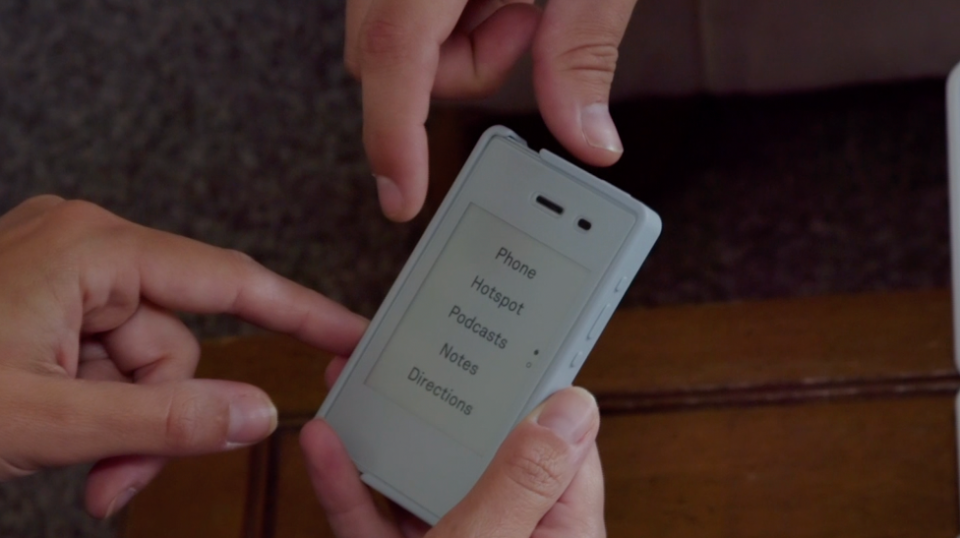Adults and teenagers concerned about screen time are ditching their smartphones for “dumber” models.
Buried in the settings of many smartphones is the option to check how much, on average, you look at your phone per day.
It can bring an uncomfortable realization that what should be a useful piece of technology has become an obsession.
“Social media is built around FOMO (fear of missing out), so I felt like I couldn’t get out of it,” 16-year-old Luke Martin from Canada told the BBC.
“I instantly got Instagram and it was a downward spiral.”
Lucas is not alone.
According to a Harvard University study, using social networking sites lights up the same part of the brain that also fires when taking an addictive substance. This has raised concerns about telephone habits among young people.
In the United Kingdom, an Ofcom study estimates that around a quarter of children between the ages of five and seven now have their own smartphone.
In some studies, links have been shown between social media use and a negative effect on mental health – especially in children.
Some activists want Age limits to be introduced for smartphone use. Others, like Luke, are choosing to exchange their smartphones for much simpler devices, called “dumbphones”.
Your new phone only has texting, calling, maps and some other limited tools.
“I think my friends’ usage is four to five hours, and that’s how long mine used to get before I got this,” he said.
“Now mine lasts about 20 minutes a day, which is really good because I only use it for what I need.”
Parents are also turning to dumbphones, not just for their children, but to help themselves be more present for their families.

Lizzy Broughton, who has a five-year-old son, recently bought an old-style Nokia “flip” phone.
“It has helped me recalibrate my own habits, I have so much more quality time with my son,” she explained.
She says that when the time comes for him to buy his own phone, she will choose an equally simple model.
“It doesn’t seem like the best idea to start with just a smartphone,” she said. “It’s like we’re handing over the world, trying to figure out how to navigate it.”
Sales of dumbphones have been increasing in North America. At Dumbwireless in Los Angeles, store owners Daisy Krigbaum and Will Stults serve customers looking for low-tech devices.
“We have a lot of parents wanting to give their children their first phone and don’t want them to be left adrift on the internet,” he said.
But giving up your smartphone is easier said than done. Stults said some schools require students to have certain apps. And it’s hard to stay on track when kids see their friends getting expensive smartphones, Broughton said.
“It’s going to take a community of parents to really think: Can we do this differently?” she said.
A workaround is a device called “unpluq,” which you tap on your phone to block certain wireless apps, like social media.
“Parents can control the smartphone with this tag and also monitor usage,” Stults said.
There are several phones that are designed especially for users who want to avoid mindless scrolling addiction.
Chris Kaspar founded the company Techless to develop an “intentionally boring” but stylish device that looks a lot like an iPhone. The latest version is dubbed “Wisephone II”.
“There are no icons, just words, two colors and two fonts.” He describes it as “very peaceful, very peaceful.”
It will have some limited third-party tools, like the taxi app Uber, but no social media.
“We’re asking this question: What is actually good for us?” Kaspar said.


He first developed the phone with his adopted teenage daughters in mind and says 25% of its sales are to children, but it is marketed to adults.
“If you have a phone branded as a children’s device, there is some shame associated with that. So we created a very adult, sophisticated, Apple-style and very cool device,” he said.
With revenue from apps and social media advertising in the billions of dollars, big companies have little motivation to encourage different habits, he said.
Meanwhile, Canadian teenager Luke says he plans to continue with his new device, much to the amusement of his friends.
“They think it’s really weird, but at this point I think it doesn’t really matter because it helped me a lot,” he said.
“It’s definitely gotten me into a better position now.”



















/cdn.vox-cdn.com/uploads/chorus_asset/file/24933463/236790_Apple_watch_9_Ultra_2_AKrales_0902.jpg?w=300&resize=300,300&ssl=1)















